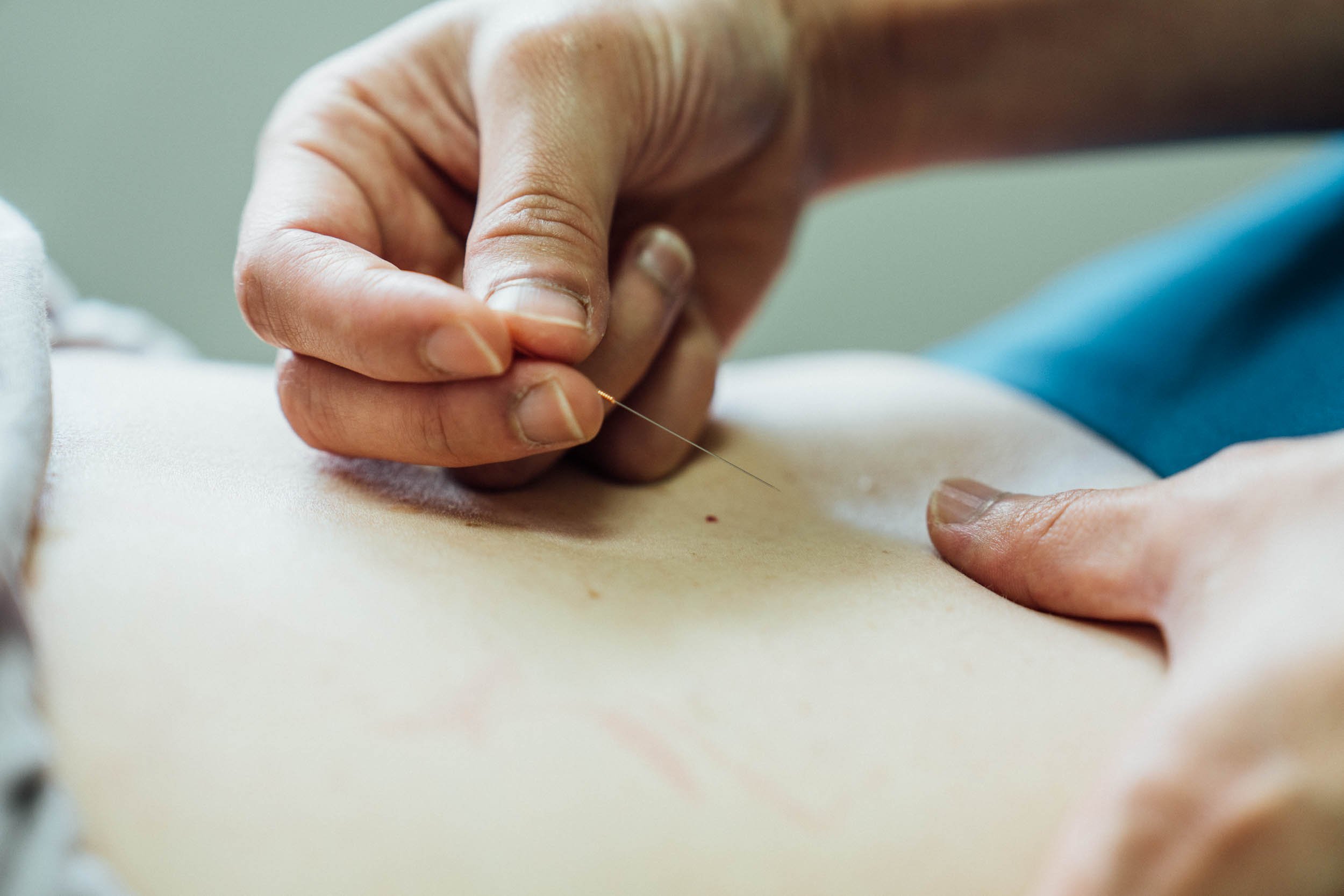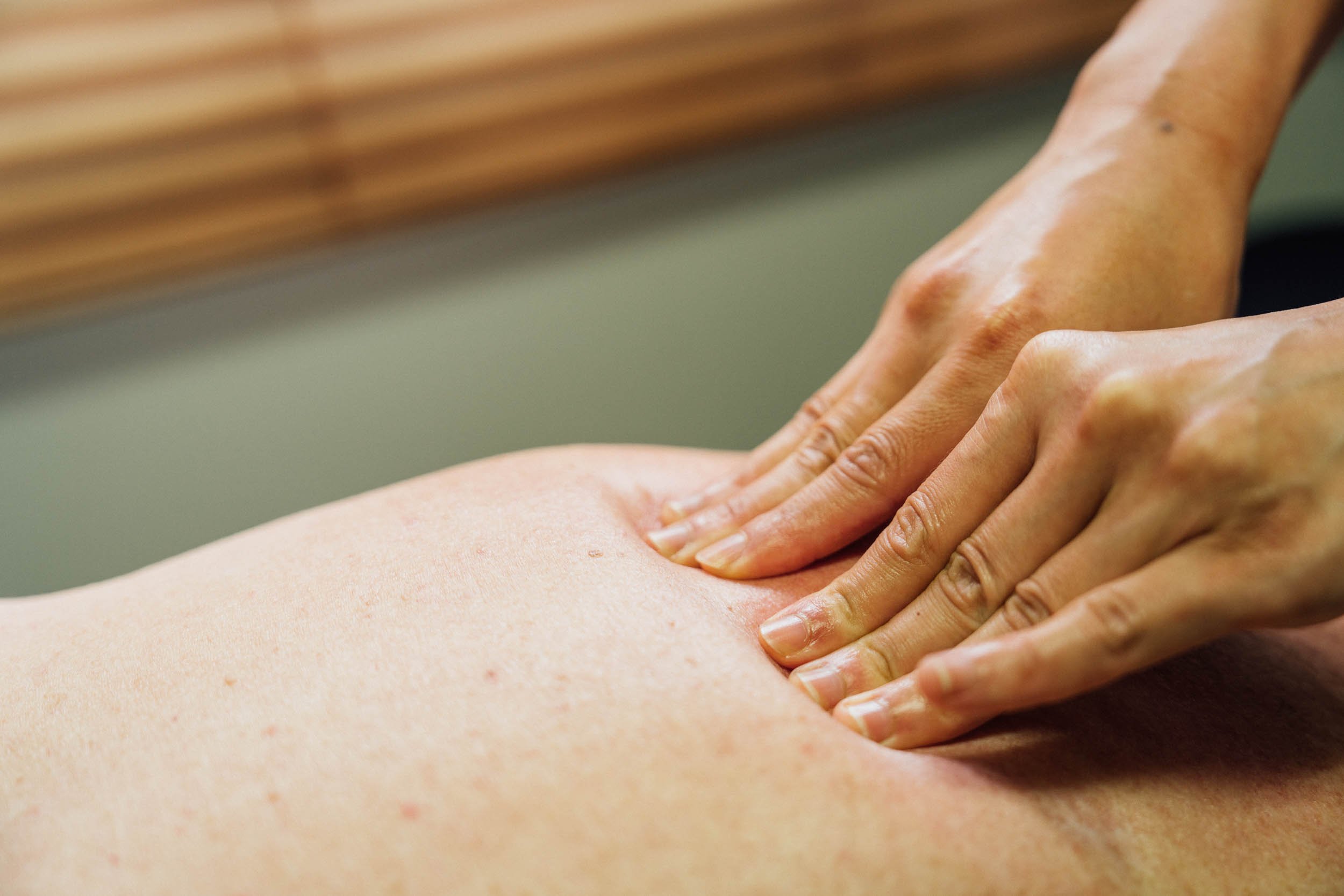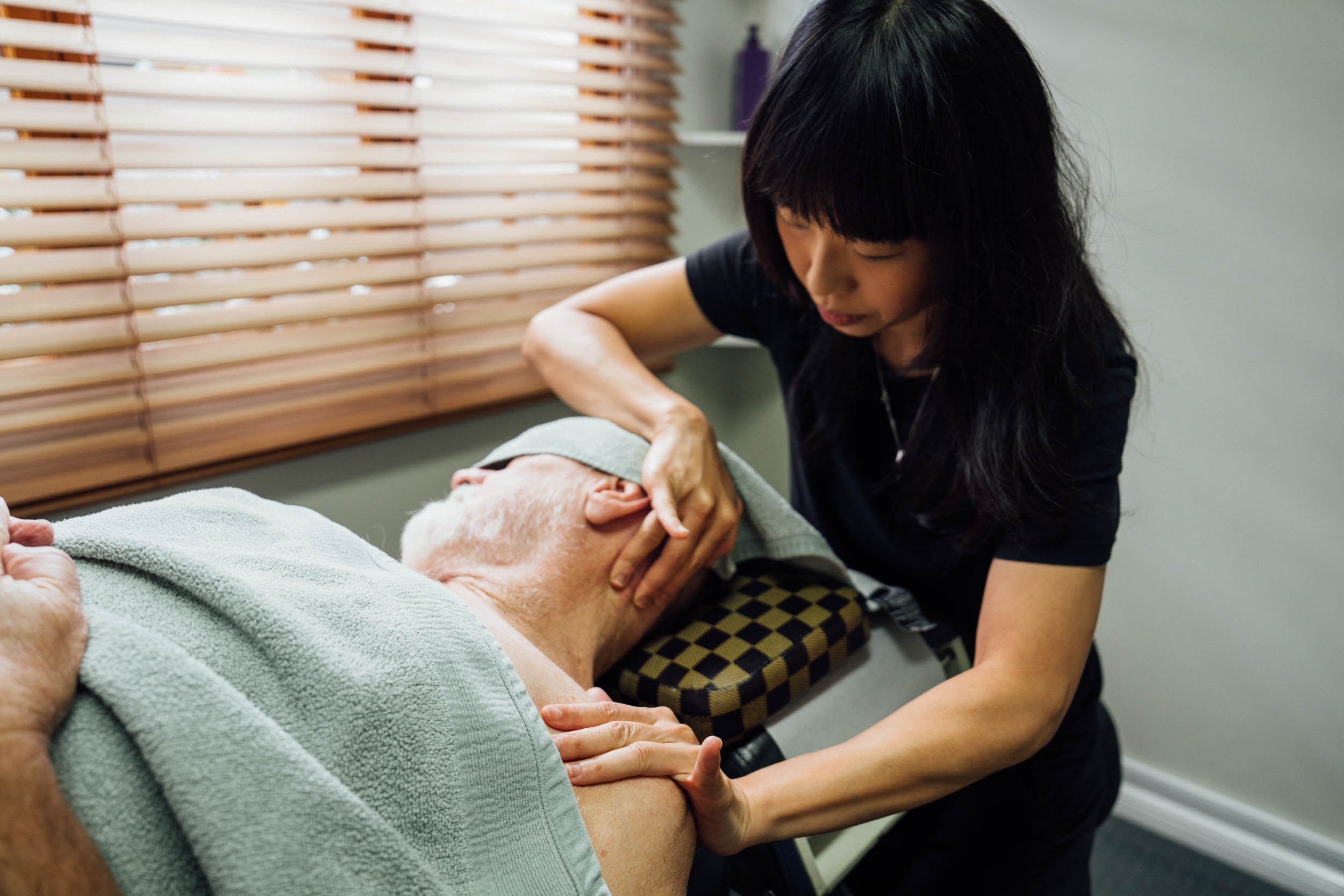
Our Services
Remedial Massage

Our massage therapists offer a range of therapeutic, individualised massage techniques that focus on addressing specific musculoskeletal issues and promoting healing, relaxation and recovery.
Our therapies
Treatment Techniques
Whether you’re looking to alleviate pain, reduce muscle tension and soreness, relieve stress, or improve range of motion, our highly experienced massage therapists provide tailored care that addresses the root cause of your concerns, to help enhance your overall well-being.
-
Deep tissue massage focuses on reaching the deeper layers of muscles and connective tissues in the body. The goal of deep tissue massage is to relieve chronic tension, tightness, and adhesions (knots) that may have developed due to injury, repetitive motion, or prolonged muscular stress. This therapy can help to not only alleviate pain and tension, but also increase blood flow to affected areas, improve flexibility, and enhance overall muscular function.
While deep tissue massage can be intense and may cause temporary discomfort or soreness, it should not be excessively painful. To ensure pressure is applied within your desired comfort level, our massage therapists will communicate with you throughout your treatment.
-
Cupping is an ancient therapeutic technique that has been used for centuries to address various health conditions. It involves the application of warm glass cups or vacuum cups to the body, creating suction by cooling the air inside the cup. This method is employed to massage the muscles by sliding the cups along the body.
Traditionally, cupping therapy focuses on placing the cups on the back, shoulders, and lower back to eliminate toxins from areas of discomfort and tension.
In stationary cupping, the cups are left on the skin for a duration of 5 to 15 minutes. This technique aims to promote the release of stagnant blood, eliminate harmful substances, and reduce internal heat, according to the principles of Chinese Medicine.
Massage cupping involves the use of oil, allowing the cups to glide smoothly over the skin to alleviate muscle tension and congestion. After cupping, the skin may develop circular marks ranging from red to dark red, but these usually fade within a week.
Cupping has a calming effect on the nervous system, often inducing a deep state of relaxation reported by clients. Additionally, individuals may experience a sensation of lightness and improved flexibility, particularly in relation to pain relief and enhanced range of motion.
-
Trigger point therapy is a soft-tissue technique used to alleviate painful tension in muscles and fascia. This pain and dysfunction is caused by trigger points, commonly referred to as “knots”, which are localised areas of hypersensitivity within a muscle that can cause pain and refer pain to other areas of the body.
During your treatment, your therapist will locate and apply focused pressure to these specific trigger points using their fingers, thumbs, elbows, or specialised tools. By deactivating the trigger points, this treatment reduces muscle tightness, alleviates pain, improves range of motion, and enhances overall muscular balance and function.
-
Reflexology is a gentle complementary therapy that involves application of pressure to specific points on the feet, hands, or ears. These areas are known as reflex zones, which correspond to different organs, systems, and structures in the body. By stimulating these reflex points, reflexology aims to promote relaxation, improve circulation, and encourage the body's natural healing response.
Reflexology is often sought for relaxation and stress reduction, as it can induce a state of deep relaxation and help release tension. It may also be used to address specific health concerns, such as digestive disorders, headaches, hormonal imbalances, and chronic pain.
-
Hot stone massage is a therapeutic technique that combines traditional massage with the use of smooth, heated stones (typically made of basalt, a type of volcanic rock). The stones are heated in water to a specific temperature and then strategically placed on specific areas, typically along the spine, in the palms of the hands, or between the toes. Your therapist may also use the stones to apply gentle pressure while performing your massage.
The heat from the stones helps to relax the muscles and promote a deeper sense of relaxation and tranquility. The combination of heat and massage can help to alleviate muscle tension, improve blood circulation, and promote a sense of well-being. The heat from the stones also helps to open up the blood vessels, allowing for better circulation and the removal of toxins from the body.
-
Dry needling is a therapeutic technique that involves the insertion of thin needles into specific points in the body known as trigger points or “knots”, which cause pain and contribute to musculoskeletal dysfunction. Dry needling aims to release tension, reduce pain, improve muscle function and range of motion, and promote the healing process.
The insertion of the needle can elicit a local twitch response, which is an involuntary reflex of the muscle. This response helps to relax the muscle and release tension. The needles are typically left in place for a short duration (a few minutes) and may be manipulated or stimulated by the practitioner.
-
Thai stretching is a therapeutic technique that combines acupressure, assisted yoga poses, and stretching, to create a holistic experience that promotes physical and mental well-being. It can be beneficial for relieving muscle stiffness, improving posture, enhancing athletic performance, reducing stress, and promoting a sense of balance and harmony in the body. It is also known to improve energy flow and stimulate the body's natural healing mechanisms.
During a Thai stretching session, massage therapists use their hands, thumbs, elbows, knees, and feet to apply pressure to specific points on the body. They also use their body weight to gently guide the recipient through a series of yoga-like stretches and movements. The stretches are passive, meaning the recipient is relaxed and allows the practitioner to move their body into various positions.

diverse expertise
Our highly trained massage therapists are equipped to treat people of all ages, from all walks of life
Our areas of expertise
Some common conditions and symptoms we treat:
Neck & Back
✓ Tension headaches
✓ Neck & back pain
✓ Postural problems
✓ Scoliosis
✓ Sciatica
✓ Whiplash
✓ Spondylitis
+ More
Upper limb
✓ Jaw pain and tightness
✓ Frozen shoulder
✓ Carpal Tunnel
✓ Tennis/Golfer’s Elbow
+ More
musculoskeletal
✓ Osteoarthritis
✓ Fibromyalgia
✓ Myofascial Pain Syndrome
✓ Muscle tightness
✓ Muscular Atrophy
✓ Tendinitis
+ More
Other
✓ Stress and anxiety
✓ Muscle cramps and spasms
✓ DOMS (delayed onset muscle soreness)
✓ Pregnancy-related discomfort
✓ Improving mobility and flexibility
✓ Insomnia
+ More

